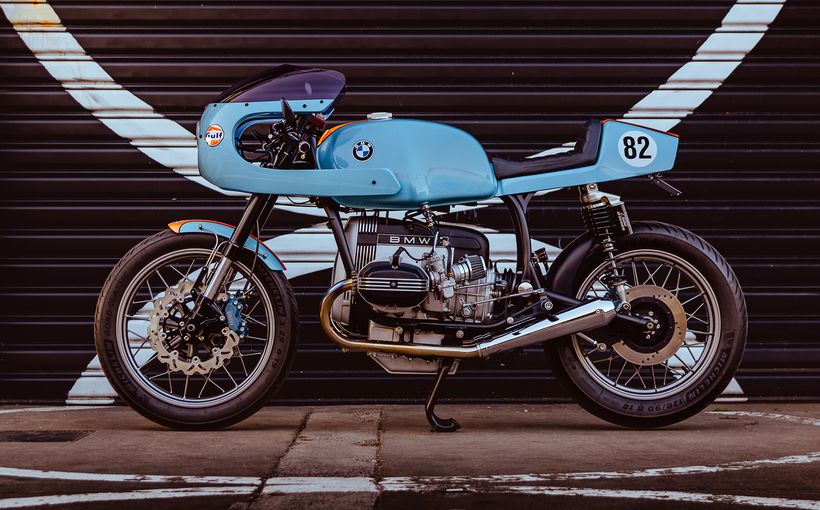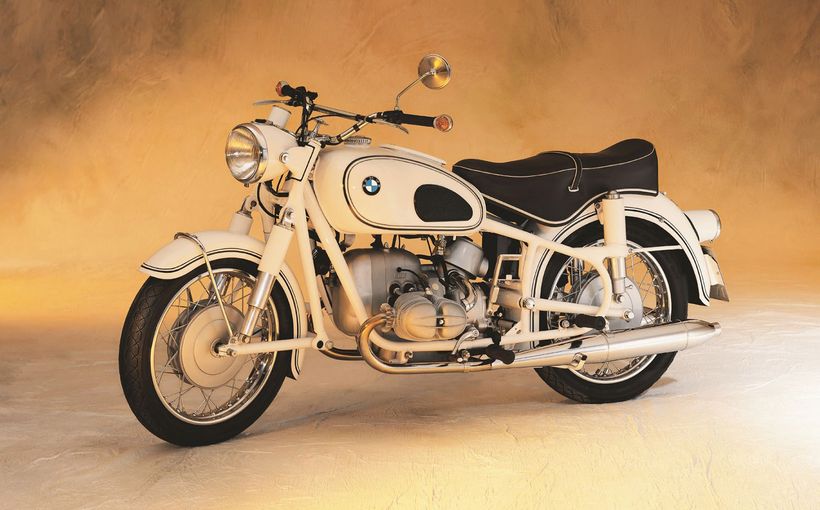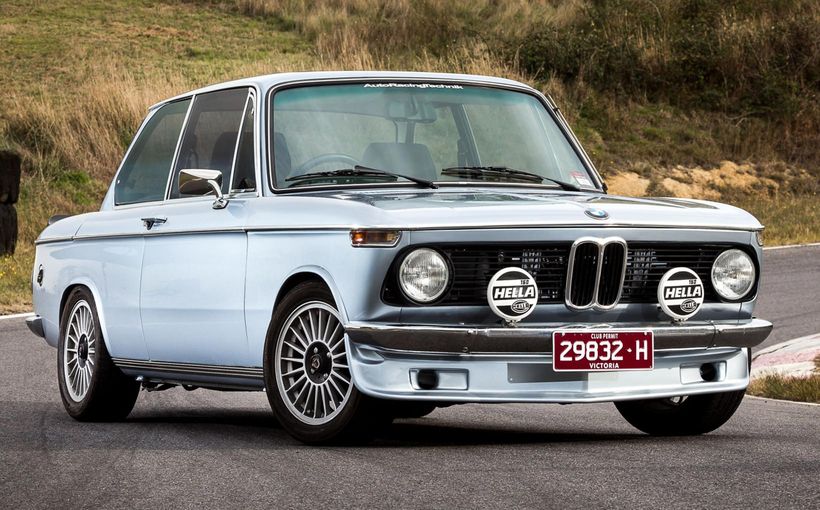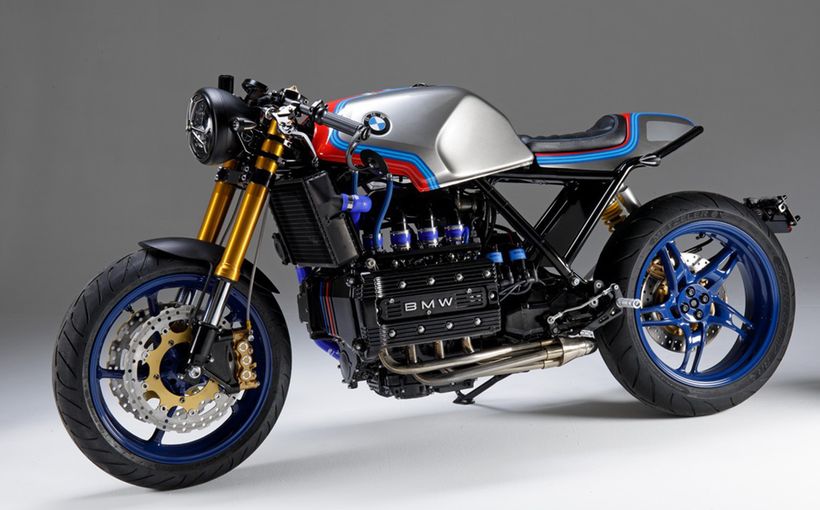BMW M5: Bavaria’s Bathurst-blitzing grand tourer

There’s no better way to prove a road car’s performance credentials than motor sport, particularly in long races for cars in stock standard, showroom trim. BMW Australia did just that with its E34 M5 in the 1992 James Hardie 12 Hour at Bathurst, blitzing its class rivals and finishing second outright in a memorable display of speed and reliability.
The luxurious Bavarian heavyweight won its class by a staggering margin of 30 laps - or more than 186km! And it was only beaten in outright terms by a twin-turbocharged FD Mazda RX-7 supercar, which would prove so dominant in future years it would hasten the premature demise of this much-loved event.
History shows that the factory-backed appearance of an M5 in the James Hardie 12 Hour was a one-off, yet it’s still cherished by those who witnessed the rapid German sedan’s sparkling performance.
A big factor in that result was the formidable combination of 1980 World F1 champion Alan Jones and 1988 Bathurst 1000 winner Tony Longhurst, who at the time were works drivers for BMW Australia in a pair of Group A M3s in the Australian Touring Car Championship.

BMW’s decision to enter an M5 surprised many, but given that all cars had to be available in Australian showrooms to be eligible (the M3 was not sold here) it was the only logical choice.
It could also be argued that, given BMW’s marketing theme of being ‘the ultimate driving machine’, it was almost obliged to do it. And such unflinching confidence in its M-badged six-cylinder grand tourer would be handsomely rewarded.
So before we delve into that remarkable performance, it’s important to briefly recap some relevant chapters in BMW’s diverse touring car racing history – namely its six-cylinder 5 Series sedans - to provide a global context for this story.

E28 528i: BMW’s unlikely European Touring Car Champion
Although the 1992 Bathurst appearance of a luxurious four-door six-cylinder BMW sedan was unexpected, it was not unprecedented.
Several examples of the German marque’s New Six model, in both carburettor 3.0S and fuel-injected 3.0Si form, competed in 3.0 litre Group C touring car racing in the 1970s, including several appearances in the Bathurst 1000.
Compared to the dominant V6 Ford Capri and Mazda RX-3, BMW’s executive express had more sophisticated four-coil independent suspension, four-wheel disc brakes and similar power output from its 2.8 litre engine, but could not overcome its major handicap – weight.
Tipping the scales at more than 1300kg in showroom trim, the big Beemer handed its Ford and Mazda rivals a huge 300kg advantage which meant it was always fighting an uphill battle, particularly at Mount Panorama (no pun intended). Its best class result in five Bathurst 1000 appearances was third in 1977, albeit 10 laps behind the winning Capri and 14th outright.

Half a world away and a decade before the M5’s first and only appearance in the 12 Hour, the E28 5 Series had been BMW’s frontline fighter in the 1982 European Touring Car Championship.
That year the ETCC had switched from the FIA’s poorly supported Group 2 regulations to Group A. Although BMW had homologated its 635 CSi to compete under the previous rules – and won the 1981 ETCC as a result - the Bavarian manufacturer determined that its sleek six-cylinder coupe could not meet Group A requirements, particularly in terms of internal cabin dimensions and annual production numbers which clearly favoured sedans.
Its best alternative was to develop a competition version of the fuel-injected 528i model. In partnership with Swiss tuning ace Rudi Eggenberger, BMW developed a ‘kit’ to convert a standard 528i into a Group A racer and 20 of these cars were produced.

You can only imagine, then, how stunned BMW’s management must have been when Tom Walkinshaw fronted with a Jaguar XJ-S for the ETCC! The canny Scot and Jaguar had clearly outsmarted their German rivals in finding a way to homologate the big V12 coupe.
As a result, BMW immediately started the lengthy process of doing the same with its 635 CSi in readiness for the 1983 season. So, even though the 528i was by then considered to be an interim race car, it was still the car to beat in the early rounds of the 1982 ETCC, when the TWR Jaguar was demonstrably faster but short on development.
The BMW Italia team, backed by Eggenberger, took full advantage of the 528i’s superior reliability to win the first five rounds in succession, allowing its drivers Umberto Grano and Helmut Kelleners to be crowned joint ETCC champions. Another 528i also managed to win the prestigious Spa 24 Hour that year.

Enter the M5
It should also be remembered that BMW’s Motorsport division had started applying its talents to the company’s road cars in the 1970s, starting with the first generation E12 5 Series. This resulted in several high-performance models, including the M535i (1979-1981).
Widely acknowledged as the progenitor of the M5, the M535i was powered by the M90 3.5 litre SOHC fuel-injected inline six which produced 160kW (215bhp). The only transmission offered was a five-speed close-ratio manual gearbox along with front and rear spoilers, uprated suspension, LSD, bigger brakes, hip-hugging Recaro seats and a steering wheel from the exotic mid-engined M1.
Combined with the momentum provided by the 528i’s victory in the 1982 ETCC, it was inevitable that a high performance 5 Series sedan, designed and built by BMW’s Motorsport division and marketed under its M sub-brand as a regular production model, would become a reality.
The first M5 was released in 1985. Based on the M535i, each of the E28 M5s was hand-built by the M division. And beneath the bonnet was the more powerful M88/3 3453cc litre inline six derived from the M1, with dual overhead camshafts, four valves per cylinder and the then staggering output of 210kW (282bhp).

Like the M535i, it was only available as a five-speed manual. Its prodigious power and relatively light 1410kg kerb weight, combined with sublime steering, suspension and braking, resulted in one of the world’s finest grand tourers. In fact, at its 1985 launch, the E28 M5 was claimed to be the fastest production sedan in the world.
The second and last of the six-cylinder M5s (the same model that competed in the 12 Hour) was launched in 1988 based on the third generation E34 series. With a much larger production run of 12,254 units, which included a rare wagon variant, it was also the last of the hand-built M cars.
A new engine with larger 3535cc displacement upped the M5’s output to 232kW (311bhp) at a spine-tingling 6900rpm. There was also a useful 30Nm torque increase to 360Nm at 4750rpm. However, these gains were offset by a sizeable 260kg increase in kerb weight to 1670kg.
Even so, the E34 M5 was capable of 0-100km/h in a scant 6.3 seconds, with an electronically-limited top speed of 250km/h (156mph). Unique to the E34 M5 were also bolt-on wheel covers with a series of internal blades, as seen on some competition cars. The purpose was to improve cooling for the quartet of ventilated disc brakes, which were put to the ultimate test at Bathurst.

1992 James Hardie 12 Hour
“In the past we’ve been frustrated by production car rules which prevent us running against the Holdens and Fords,” said BMW Australia’s managing director Ron Meatchem in the official program for the 1992 James Hardie 12 Hour. “But suddenly the rules have opened up and you can put performance cars in. With this race we can certainly show what the M5 can do.”
The 12 Hour was an intriguing new direction for BMW, given that it’s factory-backed racing efforts under Meatchem had largely been focused on touring car racing, firstly with the 635 CSi and later the M3.
Both models had achieved success in the Group A era, with each winning the Australian Touring Car Championship. However, in 1992 the M3s and Nissan GT-Rs had been lumbered with weight ballast by CAMS in an attempt to even the playing field with the Commodores and Sierras.
BMW Australia was not happy about its cars being penalised, so the opportunity to dip its corporate toe in an alternative form of racing - with no artificial hobbling - was embraced with great enthusiasm, even though the M5 was not the company’s nominated competition car.

“It’s a core result – motor racing shows off our technology, reliability, performance and aggressiveness,” Meatchem explained. “When you’ve got a 350bhp BMW (M3) beating a 640bhp Nissan (GT-R) – I think that says something. It’s a little different with the M5, but it is a product of our motorsport division designed for people who want a high performance, good handling, dynamic product. The good thing is that you can physically buy the car – people can relate to it."
“The motor racing industry is looking at developing more races like this, not just at Bathurst but also at Phillip Island and Eastern Creek. We see this race as an investment for the future in this type of racing. We’ll have an on-going involvement, provided they let us.”
So there it was. A brand-new BMW M5 at Bathurst, awaiting a 12-hour ‘road test’ like no other. And when we say new, we mean it. The Beemer had to be driven from Queensland to Bathurst as part of its recommended 5,000km running-in schedule.
At $155,000 in 1992 money, it was the most expensive car in the capacity 55-car field. It was also an official ‘works’ car entered by BMW Australia Pty Ltd. Neville Crichton was on-hand as a relief driver for Longhurst and Jones, but the Kiwi’s services were not needed during the race.

Six classes catered for a wide variety of cars available in Australia. The M5 was in Class C for cars 2501cc-4000cc. No turbocharged exotics here; they had their own Turbo & 4WD division - Class T - in which the new FD Mazda RX-7 would also make its track debut.
The other seven cars in Class C were all homegrown six-cylinder Falcons and Commodores, leaving the German invader as the white-hot favourite. The M5 was also widely tipped as a potential outright winner if the equally unproven Mazdas struck trouble.
Being a new car, there were the inevitable gremlins during practice and qualifying, including replacement of the clutch which just didn’t feel right. This meant reduced track time but Longhurst gave a glimpse of the M5’s potential in qualifying, clocking the eighth fastest time in traffic to secure a starting position on the outside of the fourth row.
His best time of 2min 45.44 secs (some reports claimed 45.22) was demonstrably faster than his closest pursuer in Class C – a VP Commodore S at 2min 51.7secs. By comparison the M5 was light years behind the pole-winning Bowe/Hansford RX-7 with a staggering 2min 36.28secs. Even so, both times would have been fast enough to make the cut for the Bathurst 1000 in October.
From the pre-dawn 5.30am start the M5, with its brake discs glowing and headlights ablaze, was in a class of its own. At the end of the first lap Longhurst was already clear of his closest Class C pursuer. After 29 laps he was more than one lap in front. By 7am, he was also third outright behind the two Mazdas.

After five hours, now with a two-lap class lead, the BMW team started to consider the genuine potential of an outright victory. The M5 actually led the race at one stage when the turbocharged Mazdas were making up ground after lengthy pit stops of their own.
However, like its mercurial Japanese rivals, the German sedan was showing an insatiable appetite for brakes, which was costing crucial track time attending to them at each pit stop. The M5’s howling six also started to sound a bit rough when one bolt securing the exhaust extractors worked loose, but the car continued to run strongly with no effect on lap times.
Even so, it was not fast enough to overcome the two-pronged Mazda attack over 12 gruelling hours, with the O’Brien/Waldon/Gibbs RX-7 crossing the finish line three laps clear of the Longhurst/Jones BMW in second place, which was one lap clear of the Bond/Seton/Mathews Saab 9000 in third.
The M5 pulverised its six-cylinder opponents in winning Class C. The Falcons and Commodores were not only outpaced but most succumbed to mechanical failures and other mishaps, resulting in the BMW’s enormous 30-lap winning margin. Heck, that's more than 186km!
It never missed a beat during its 251 laps and 1600km of racing. And it finished with only 4700km on the odometer, which was still 300km short of the recommended running-in period!

With its tremendous 250km/h (156mph) top speed, the M5 was theoretically capable of matching the RX-7s down Conrod Straight. However, having to stop such a fast and heavy car (at 1670kg the heaviest in the race) at the end of it, more than 250 times over 12 hours, would prove to be the only chink in the M5’s armour.
Its healthy appetite for brakes required time-consuming pad replacements at each stop and, on at least one occasion, replacement of the disc rotors as well. “If only we’d had a pad that lasted a bit longer – that was our downfall,” Longhurst told Chevron Publishing after the race. “The car had the same terminal speed as the Mazda and you’ve got to pull it up somehow.”
Even so, for a brand-new, showroom-stock road car with minimal preparation and testing, it was a remarkable performance. It was also another demonstration of the six-cylinder 5 Series’ sporting pedigree which commenced with the 528i’s ETCC victory a decade before. And compelling proof that the M5, although primarily designed as a grand tourer, was more than worthy of displaying BMW’s M for Motorsport badge.









